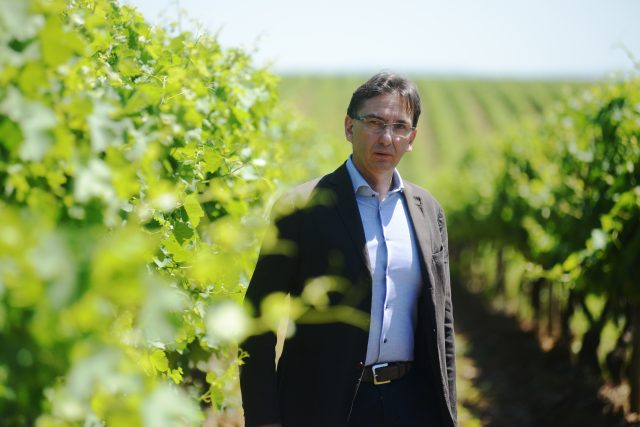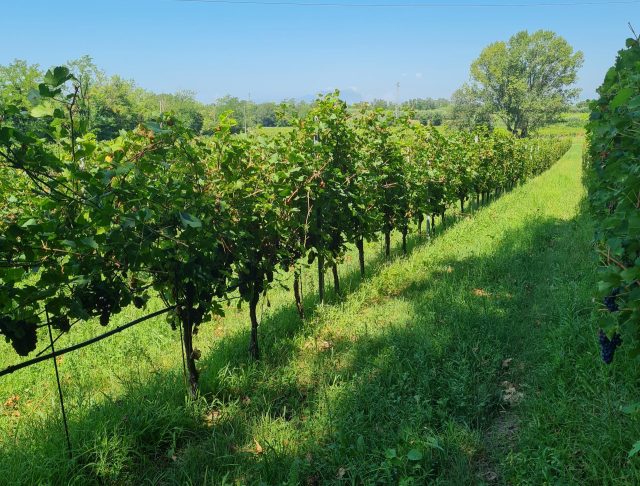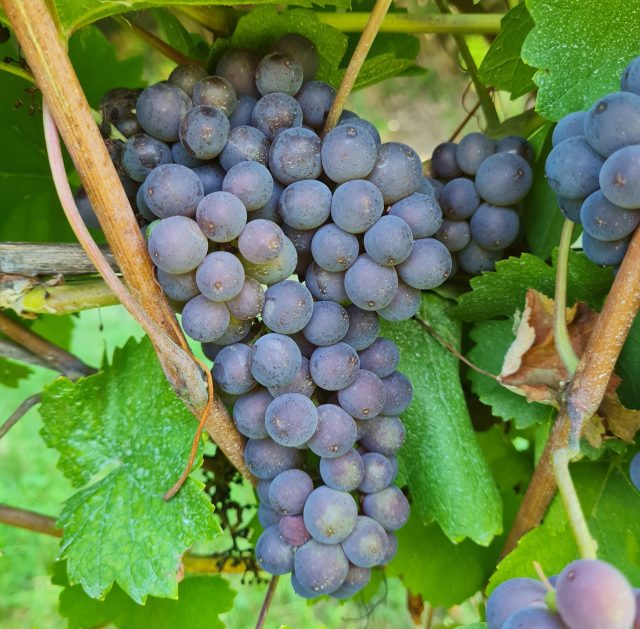This website uses cookies so that we can provide you with the best user experience possible. Cookie information is stored in your browser and performs functions such as recognising you when you return to our website and helping our team to understand which sections of the website you find most interesting and useful.
How GIV is preparing its Pinot Grigio for climate change
Gruppo Italiano Vini (GIV) oenological director Christian Scrinzi shares how the company is working with its growers in Delle Venezie DOC to secure a fresh future for Pinot Grigio.

The hot topic of recent years in the Italian wine world has been how climate change has created problems for producers across the country. From catastrophic floods in Emilia-Romagna to scorching temperatures in Sicily, Italy has been at the mercy of increasingly extreme weather conditions.
“Climate change is undeniable. In the vineyard, this can be seen with the rise in average temperatures and the sudden rainfall often accompanied by extreme weather. Starting with a drought-stricken spring, after budding the climate veered towards heavy rainfall that caused problems with downy mildew and hail,” Scrinzi explains.
“Fortunately,” he continued, “Pinot Grigio Delle Venezie DOC benefits from an extensive cultivation area: it spreads over a variety of areas, thus suffering less and ensuring an optimal average production level. In addition, in some areas the vines are pergola-trained, a system that allows greater protection of the bunches from sunburn and the violence of hail.”

Indeed, GIV and Delle Venezie DOC are already implementing further solutions to secure the long-term future of Pinot Grigio production: “It is increasingly important, and essential, to adopt an evolved viticulture. In the Delle Venezie DOC area, in order to counteract climatic adversity, it has become fundamental to create a network of technical services, consultancies, and agronomists present in the vineyard to support producers.”
Emergency irrigation and anti-hail nets are other measures that have been introduced. Scrinzi also notes that GIV makes a great effort to foster relationships with growers, particularly when it comes to ensuring the sustainability of production.
But what of the distinct freshness that has made Delle Venezie DOC’s Pinot Grigio such a success among global consumers? Scrinzi suggests that the variety has an intrinsic advantage: “Pinot Grigio is not a sugar accumulator, so it is more suitable than other varieties in warm weather.”

Of course, work in the vineyard and winery is required too: “It is essential to harvest it at its optimum degree of ripeness. For GIV, freshness is one of our primary goals, which we pursue starting in the vineyard, with leaf coverage, monitoring the time of harvest,
harvesting in the cooling hours of the night. At the winemaking stage, we select the most suitable fruit and pay great attention to maintaining low temperatures during alcoholic fermentation and maturation.”
The result from this hard work is, in Scrinzi’s words, a wine that is “elegant, fine, has a lower alcohol content and freshness”.
Providing his early assessment of the 2023 vintage, Scrinzi says: “2023 is an atypical, somewhat unusual vintage, with spring drought and excessive rain that hindered vineyard maintenance. Hail in some areas may have created more attention.”
However, Scrinzi shares: “There are very good signs of quality, but care will have to be taken to isolate grapes from plots that have particularly suffered.”
Given that Pinot Grigio is the third most-planted wine grape variety in Italy, GIV’s work to ensure the long-term viability of its production is pivotal both to satisfying the huge international demand for the wines, and the future of the Italian wine sector.
To discover more about GIV, click here.
Related news
How analytical insights help craft fine Languedoc wine

